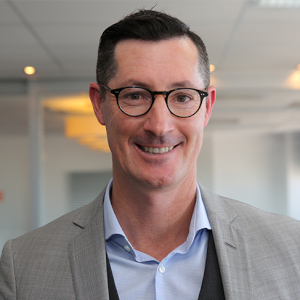Are satellite cities a good investment?
In the grand scheme of things, it wasn’t that long ago that more Australians lived in the country than the city. What’s changed, and what’s to come for property investors?

Today, about 65 per cent of our population live in capital cities, including about 10 million in just two cities – Sydney and Melbourne.
To continue reading the rest of this article, please log in.
Create free account to get unlimited news articles and more!
A big change in the way Aussies live in cities over the past few decades, though, has been the rise and rise of satellites, which have evolved over the years within town planning reforms. And, it’s important for property investors to appreciate the role that satellite cities play.
One of the principal reasons for the establishment of satellite cities was to reduce the need for a large percentage of a city to commute to a central location, like the CBD, for work and essential services, which usually resulted in gridlock and plenty of grumpy residents.
Town planners have instead adopted a hub-and-spoke model where employment nodes and supporting infrastructure has been developed to service suburbs in the north, south, east and west of a city.
The satellite city concept is akin to making multiple ‘CBDs’ across different parts of a city (or within a broad region).
When is a satellite city not a satellite city?
Each major city and many large regional centres in Australia have satellite cities these days, but one in particular stands out as morphing into something else entirely.
Parramatta is Australia’s largest satellite city, which today is actually more reflective of a capital city in its own right.
It is classed as Sydney’s second CBD and is the capital of Western Sydney, where a whopping 9 per cent of Australia’s total population lives (that’s a population as big as Brisbane – Australia’s third largest city). Sardines anyone?
Sydney’s bulging population and its land-locked geography is behind the evolution of Parramatta. It has everything that you would expect in a major city – from high density housing and major shopping precincts to world-class sports stadiums and its own airport (once Badgerys Creek is complete in 2026).
As Greater-Sydney’s population continues to grow, the state government will keep funnelling it around a 3-city strategy – Western Sydney (Parramatta), Sydney CDB, and the Easter Harbour – that are complemented by standalone satellite cities in Penrith, Gosford and Wollongong.
What are the major satellite cities?
While Melbourne’s designated major activity centres include Dandenong, Sunshine, Werribee and Monash, Geelong has increasingly become an unofficial satellite city for Melbourne’s outer-south-west.
One of the biggest underestimations made by a high proportion of the Australian population (including lots of so-called ‘property experts’) is the quality of life in many non-capital locations. Over the generations, some really strong regional satellite cities have evolved across Australia.
Regional Australia’s population increased by 78,000 people last year and that annual figure is growing.
In every state in Australia, there are plenty of regional cities that play the role of a satellite city to a broader region. In addition to supporting their own stable population, the hub-and-spoke system also provides essential goods and services to nearby smaller towns and villages.
Those regional satellite cities include Albury, Armidale, Ballarat, Bendigo, Bunbury, Burnie, Cairns, Coffs Harbour, Dubbo, Geelong, Geraldton, Hervey Bay, Launceston, Mackay, Maitland, Mildura, Mount Barker, Mount Gambier, Newcastle, Orange, Port Macquarie, Rockhampton, Shepparton, Tamworth, Toowoomba, Townsville, Wagga Wagga and Wollongong.
Brisbane’s future population growth, meanwhile, is coordinated within the South East Queensland Regional Plan, which has resulted in satellite cities that include Ipswich (particularly Springfield), Southport (Gold Coast), Maroochydore (Sunshine Coast), Strathpine (Moreton Bay) and Springwood (Logan).
Greater Perth’s population planning includes major activity centres in suburbs such as Stirling, Morley, Cannington and Fremantle.
Should you invest in satellite cities?
As you probably know by now, Propertyology believes that affordability will continue to be one of the driving forces for property markets around the country for as long as the grass grows green.
Too many property investors confuse status and desire with ‘demand’. The fewer people who can afford a commodity the lower the demand, especially in times when consumer confidence is less buoyant!
One of the legacies of being raised in a military family is that I’ve personally lived in various parts of this incredibly diverse country. In my role as a full-time property market analyst, I’ve spent plenty of time in eight out of eight capital cities and more than a dozen non-capital city locations. And, as someone who’s determined not to end up reliant on a taxpayer-funded handout later in life, I’ve personally invested in all corners of Australia.
But ask yourself this: ‘Why is the city that currently has Australia’s lowest unemployment rate (Sydney) losing 20,000 people to internal migration each and every year?’
On the other hand, locations with essential infrastructure, a stable economy, and a lifestyle component (coastal, rural, regional etc), will have genuine demand if their housing is affordable.
To be completely frank, I’ve grown increasingly frustrated by the persistent ill-informed remarks about locations outside of Australia’s four biggest cities. Comments such as “…there’s no jobs there… population doesn’t grow… and property prices don’t grow…” are not only completely wrong but it’s down-right ignorant to refuse to review the evidence. Other comments such as “…it’s too hot / cold… too small… I wouldn’t want to live there…” are as subject as t-bone, trout and tofu!
In my professional opinion, there’s absolutely no doubt that satellite cities will continue to go from strength to strength. This month I spent an entire week on a research field trip in one such (regional) satellite cities and can’t wait to start investing there.
Existing transport infrastructure already makes many of these satellite cities accessible within one or two hours. More and more government strategies will involve decentralisation techniques. Even more so than the last 100 years, world demand for Australia’s rocks and crops will continue for the next 100 years. And tourists (domestic and international) are frequenting our regional wonders more and more.
Whether within a capital city or regional city, satellite cities are a less mature version of main CBDs so it’s important to understand zoning changes.
Certain pockets can be converted to mixed use – such as combining apartment living with retail and office space. Land can be released on the urban fringe for future housing supply but, they can just easily increase density by building through the stratosphere in a sardine city.
When it comes down to whether you should invest in satellite cities, it’s vital that you consider more than just the fact that property is more affordable than those within the concrete jungle.
Remember, ‘capital city’ is just a term – there can only be ONE in each state and territory. Historical evidence has taught those who have studied it thoroughly that ‘big city’ does not mean ‘bigger price growth’. Property prices in 3 out of Australia’s 4 biggest cities are currently declining, while our third biggest city has been stuck in first gear for a decade.
Remove the blinkers; block out the noise!
All good property investment decisions require a thorough analysis of localised fundamentals. One needs to totally understand the individual industry sectors that are most important to that city’s economy.
Personally, I place most emphasis on understanding the outlook for each of the key industry sectors and investigating the plans and proposals of industry groups and major employers. An increase in jobs and improved local confidence increases demand for housing. Just look at what happened in Hobart!
It’s also vital for an investor to understand where that city sits in the property cycle. If it’s recently had a period of strong growth that almost always means that the next growth cycle is several years away.
Finally, have a close look at localised housing supply (current and in the pipeline).
It’s in every investor’s best interests to have a completely objective view of every location in Australia.
Simon Pressley is the head of research at Propertyology.

